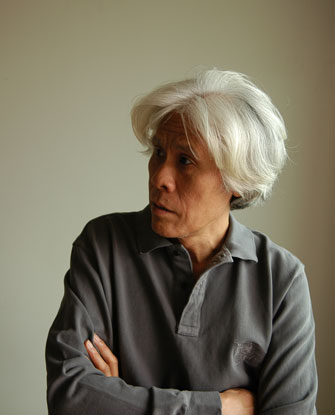 |
| Wang huaiqing |
For the true artist, what is important is finding what is spiritual. I believe we need more spiritual value and direction in art today.
My association with Wang Huaiqing dates back to 1987. I worked on an exhibition that brought paintings by over 70 artists to New York for the first major showing of contemporary Chinese art in the U.S. Huaiqing was one of about a dozen artists who came from China to attend the opening. Subsequently, he remained in the States under the sponsorship of collector Robert A. Hefner III, and ended up teaching for a while in Oklahoma City where we became friends. For all the years since that I have traveled to China, I have always looked forward to visiting Huaiqing and keeping up with the development of his work.
For anyone who has only been aware of Huaiqing’s art over the past 10 to 15 years, it would be difficult to imagine how different it is from what I saw in New York in 1987. Back then, he was often identified as a realist painter producing, quite capably, representational portraits and landscapes. One can, however, find examples of works from the late 1980s that show the influence of abstraction, something that was rare in Chinese painting at the time.
This distinction in Huaiqing’s art is attributable to the fact that he studied under master Chinese painter Wu Guanzhong, who was known for his abstract style that blended Western techniques with Eastern ideology and subject matter. But it is impossible to look at Huaiqing’s prolific body of work from the early 1990s to the present, based primarily on interpretations of classical Chinese architecture and furniture, and compare it to that by any other Chinese artist. He is unique, and in my opinion, defines the best qualities in contemporary Chinese art. His knowledge of art history outside of China and the ability to integrate techniques not inherently Eastern that show respect for Chinese culture ultimately produces art that is new and important within the context of the time it is made. Huaiqing is, to me, on a level with the greatest artists of our time. I truly believe history will compare him to Picasso or Matisse.
Given the many discussions I have had with Huaiqing about the development of Chinese art, I have always appreciated his deep respect for his culture and the wisdom he brings to his assessment of it.
Sitting in one of his Beijing studios for an interview in late 2009, we are surrounded by a number of pieces simultaneously in progress. These latest works involve burned and stained scraps of wood that are being affixed to canvases to form completely abstract compositions. I mention to Huaiqing that while these reflect the use of new materials, they don’t represent any dramatic change in his style. This leads to a discussion about changes in contemporary Chinese art in general. I ask him to try to describe those changes – both good and bad perhaps – that he has witnessed over the course of the past 20 years.
“From a Western viewpoint, it would appear that changes came to China suddenly. Sometimes sudden changes can shock people and in that moment, nothing seems logical. But as you study the changes, you can find an inner logic. The greatest change that occured in my country was from the 1970s to the 1980s when China went from a closed society to an open one. When that happened, influence from the West pushed into our country with an unbelievable strength and, as artists, we had to search hard for our own identity. Personally, I decided that I had to focus and find a vocabulary that connected to modern times.
For me, there was also a need for it to be spiritual. The problem is, the continuous change in our society has induced some artists to continuously change their art to keep up with trends. As a result, there are those who care more about making money than making art. For the true artist, what is important is finding what is spiritual. I believe we need more spiritual value and direction in art today.”
We recommend:
